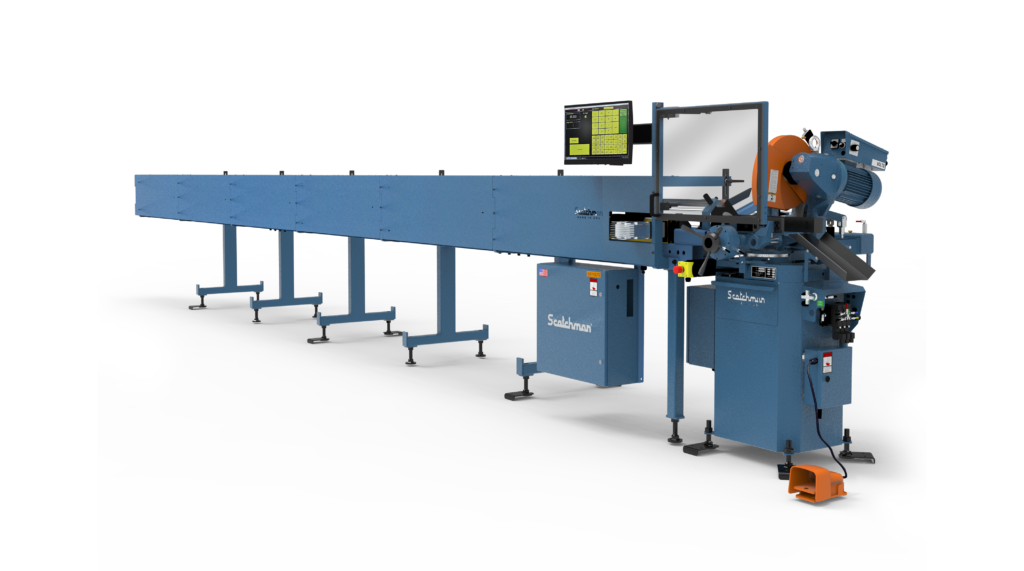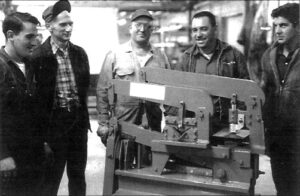
Nearly 60 years ago, Arthur Kroetch, an industrious entrepreneur from the small town of Philip, South Dakota, launched what would eventually become the nation’s leading manufacturer of hydraulic ironworkers. Now under the leadership of Kroetch’s son, Jerry, Scotchman Industries continues to bring innovative products to market, currently producing 13 models of hydraulic ironworkers, ranging from 45 to 150 tons in capacity all manufactured in this small South Dakota town – population 779.
“I’m physically in Philip and I have to drive 85 miles either east or west to find the nearest stoplight,” says Jerry Kroetch, President of Scotchman Industries. “If you went north or south, you’d have to drive over 100 miles to find a stoplight. So we are in rural South Dakota.”
Art Kroetch left school after the eighth grade to work on the family ranch before striking out on his own as a young man by starting his own haying business for other ranchers in the area. Before long, Kroetch started manufacturing a cattle oiler under the name Wick-O-Matic Automatic Oiler Company. Developed to keep insects away from cattle, Kroetch was forced to pivot away from the successful cattle oiler business once the EPA banned the device’s insecticide in the early 1960s. He then began making metal gates, chutes, and panels for the livestock industry, the door that eventually led him to the world of ironworker manufacturing.
Scotchman Industries
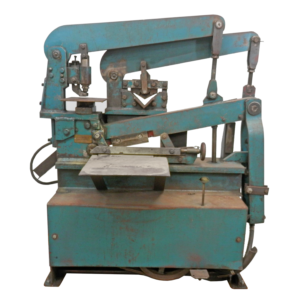 “He purchased an ironworker from a gentleman out of Minnesota who invented the first hydraulic ironworker in the world,” says Jerry Kroetch. At that point, Ironworkers had been around for more than 100 plus years, “but they were all the big flywheel mechanical type machines,” says Kroetch. “The machine Kroetch purchased was one of the first hydraulic ironworkers in the world and, during the next few years, Kroetch kept in touch with the machine’s inventor. In 1967, he bought the patent for a small 35-ton hydraulic ironworker, changed the name of the company to Little Scotchman Industries, and started manufacturing machines from a shop in Philip, South Dakota. “So he went from Art’s salvage to Wick-O-Matic Automatic Oiler Company, to Little Scotchman Industries,” says Kroetch. “In the late 70s, we felt we outgrew the “Little” portion of Little Scotchman, and just stayed Scotchman Industries. Today, we are America’s largest hydraulic ironworker manufacturer located in, Phillip, South Dakota.”
“He purchased an ironworker from a gentleman out of Minnesota who invented the first hydraulic ironworker in the world,” says Jerry Kroetch. At that point, Ironworkers had been around for more than 100 plus years, “but they were all the big flywheel mechanical type machines,” says Kroetch. “The machine Kroetch purchased was one of the first hydraulic ironworkers in the world and, during the next few years, Kroetch kept in touch with the machine’s inventor. In 1967, he bought the patent for a small 35-ton hydraulic ironworker, changed the name of the company to Little Scotchman Industries, and started manufacturing machines from a shop in Philip, South Dakota. “So he went from Art’s salvage to Wick-O-Matic Automatic Oiler Company, to Little Scotchman Industries,” says Kroetch. “In the late 70s, we felt we outgrew the “Little” portion of Little Scotchman, and just stayed Scotchman Industries. Today, we are America’s largest hydraulic ironworker manufacturer located in, Phillip, South Dakota.”
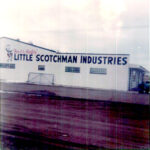 Since the 1960s, the basic functionality and exceptional quality of the Scotchman hydraulic ironworkers haven’t changed very much. However, Kroetch and the Scotchman team have made several innovations over the years that have made their ironworkers vastly more efficient and customizable. For instance, the original machines had an inboard punching station, which limited the size of the piece of steel that could be inserted into the punching station. Over time, the machine has been redesigned with an outboard punch. “With the punch station being on the outside of the machine users can punch very large pieces of the plate with the only limitation being the throat depth,” explains Kroetch.
Since the 1960s, the basic functionality and exceptional quality of the Scotchman hydraulic ironworkers haven’t changed very much. However, Kroetch and the Scotchman team have made several innovations over the years that have made their ironworkers vastly more efficient and customizable. For instance, the original machines had an inboard punching station, which limited the size of the piece of steel that could be inserted into the punching station. Over time, the machine has been redesigned with an outboard punch. “With the punch station being on the outside of the machine users can punch very large pieces of the plate with the only limitation being the throat depth,” explains Kroetch.
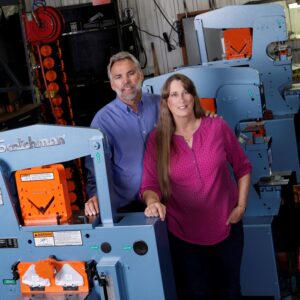
Over the years we also went from a single operator machine to a dual operator machine, which allows two people to run the machine simultaneously,” he adds. “Our machine gives you a variety of two different functions that can be done at the same time. For example, One user can be punching a piece of plate, while at the same time, another user can be taking a piece of flatiron and shearing it off to lengths,” Kroetch says. “So in a nutshell, you can be shearing or notching plates, and have another user punching holes without interruption or loss of power,” Kroetch says. “Not only can you just punch or shear simultaneously, but I can also be shearing angle iron while somebody else is notching angle iron at the same time. Our machines can be operated by two users doing different functions at the same time.”
As the largest – and one of the few remaining – hydraulic ironworker manufacturers in the U.S., Kroetch says Scotchman’s chief competitors are international manufacturers, especially companies from Taiwan and Spain. While the team has taken some cues from their European and Asian counterparts, particularly in the look of their machines, Kroetch says Scotchman ironworkers offer far more efficiency, versatility, and customization that sets this team of South Dakotans apart. “We all do the same thing. We punch, shear, notch, and bend, but again, the design of the machines are totally different.”
For instance, Kroetch says Scotchman ironworkers offer more versatility than their competitors, in the U.S. and abroad, thanks to an innovative tool table area in which the optional tools, such as the angle shear, channel shears, press brakes, and rod shears, sit on the tool table and the machine’s upper beam actually makes the tool go up and down. An innovation that can save a Scotchman customer loads of time and lead to greater productivity.
“I can change tools faster than any of my European competitors because most of their optional tools have to be installed in the punch station. Having to totally disassemble the punch station in order to put in a press brake might take 30 to 40 minutes for one of my European competitors to change a tool, where I can do it on my tool table in two or three minutes,” says Kroetch. “That gives us a huge advantage due to our versatility.”
Another advantage Scotchman Industries has over its competitors is the ability to manufacture custom-design machines or modify existing ones. Kroetch says the Scotchman team of 69 people – many of them long-term employees – can create anything the customer can dream up. Most of the company’s customization requests, says Kroetch, are from customers needing a machine that can punch holes in the angle iron. Kroetch explains: “They want a machine that can process 22–24 foot sticks of two-inch to six-inch angle iron with the programming ability to punch x number of holes x number of inches apart.’
“They push ‘go’ and the feed system is going to push that piece of angle iron to whatever dimension you might need and the machine’s going to cycle punch the hole,” he adds. “It’s going to punch and push that piece of material to the next length and punch a hole.”
Ironworkers aren’t the only machines manufactured by Scotchman Industries. The company also manufactures a complete line of circular cold saws and distributes a line of programmable measuring systems, pipe notchers, and hydraulic presses, all from the Scotchman plant in the tiny town of Philip, South Dakota.









